Three large conducting sheets placed parallel to each other at a finite distance contain charges Q,−2Q,and3Q, respectively. Find the electric fields at points A, B, C, and D.
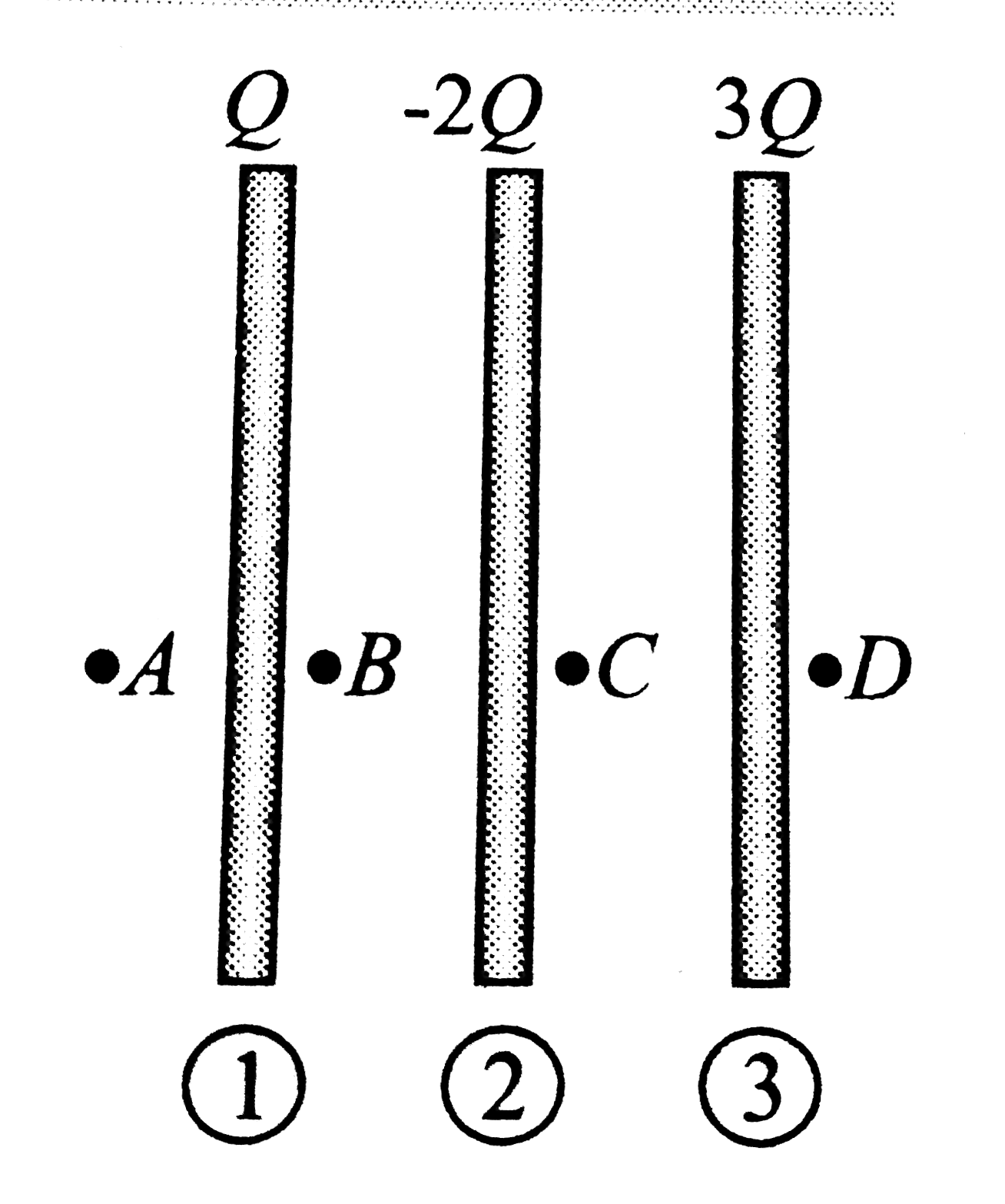
EA=EQ+E−2Q+E3Q. (i) Here EQ means electric field due to 'Q'.
EA=(Q−2Q+3Q)2Aε0=2Q2Aε0=QAε0 towards left
(ii) EB=Q−(−2Q+3Q)2Aε0 towards right =0
(iii) EC=(Q−2Q)−(3Q)2Aε0=−4Q2Aε0=−2QAε0 towards right ⇒2QAε0 towards left
(iv) ED=(Q−2Q+3Q)2Aε0=2Q2Aε0=QAε0 towards right
Topper's Solved these Questions
- BOOK - ALLENCHAPTER - MISCELLANEOUSEXERCISE - Part -II Example Some worked out Examples1videos
MISCELLANEOUS
- BOOK - ALLENCHAPTER - MISCELLANEOUSEXERCISE - Exercise-0187videos
MISCELLANEOUS
- BOOK - ALLENCHAPTER - MISCELLANEOUSEXERCISE - SUBJECTIVE QUESTION9videos
MISCELLANEOUS
- BOOK - ALLENCHAPTER - KINEMATICS (MOTION ALONG A STRAIGHT LINE AND MOTION IN A PLANE)EXERCISE - BEGINNER S BOX-78videos
KINEMATICS (MOTION ALONG A STRAIGHT LINE AND MOTION IN A PLANE)
- BOOK - ALLENCHAPTER - PHYSICAL WORLD, UNITS AND DIMENSIONS & ERRORS IN MEASUREMENT EXERCISE - EXERCISE-IV8videos
PHYSICAL WORLD, UNITS AND DIMENSIONS & ERRORS IN MEASUREMENT
Similar Questions
Two large parallel conducting sheets (placed at finite distance) are given charges Q and 2Q respectively. Find out charges appearing on all the surfaces.
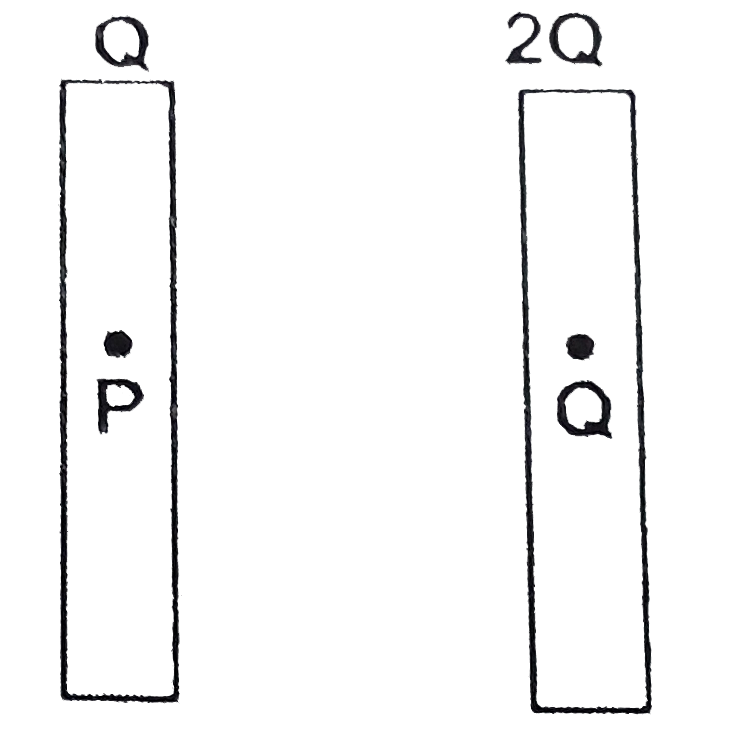 View Solution
View SolutionTwo large conducting plates of a parallel plate capacitor are given charges Q and 3Q respectively. If the electric field in the region between the plates is E0 , then the force of interaction between the plates is
 View Solution
View Solution
Knowledge Check
- Question 1 - Select One
A charge +Q at A (see figure) produces electric field E and electric potential V at D. If we now put charges −2Q and +Q at B and C respectively, then the electric field and potential at D will be
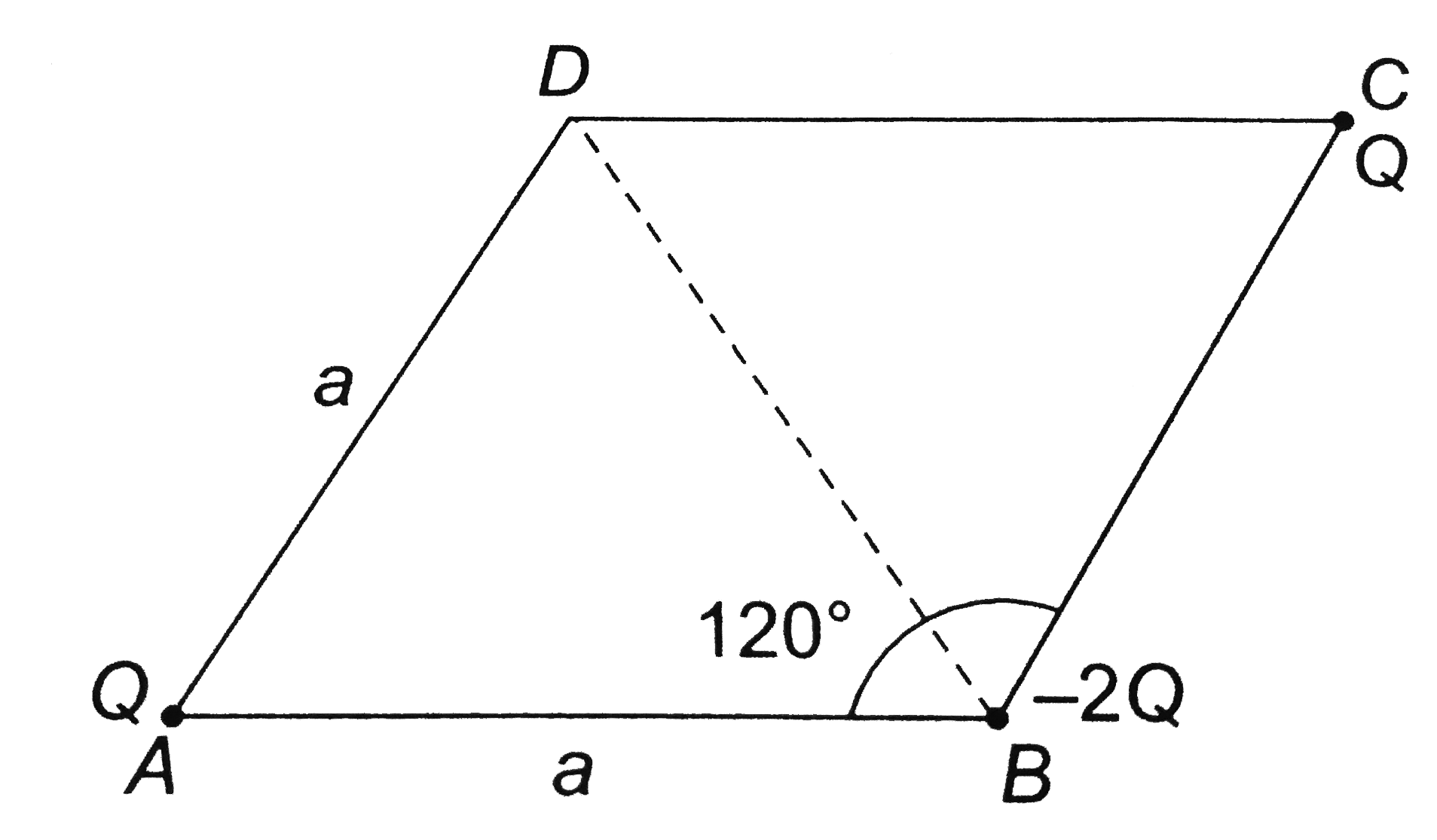 AE and 0B0 and VC√2E and V√2DE√2 and V√2
AE and 0B0 and VC√2E and V√2DE√2 and V√2 - Question 2 - Select One
Three large identical conducting parallel plates carrying charge +Q,−Q,and+2Q, respectively, are placed as shown in figure. If EA,Eb,andEC refer to the magnitudes of the electric field at points A, B, and C, respectively. Then
 AEA>EB>ECBEA=EB>ECCEA=0andEB>ECDEA=0andEB=EC
AEA>EB>ECBEA=EB>ECCEA=0andEB>ECDEA=0andEB=EC - Question 3 - Select One
A charge +Q at A (see Fig. 3.140) produces electric field E and electric potential V at D. If we now put charges −3Q and +Q at B and C, respectively, then the electric field and potential at D will be
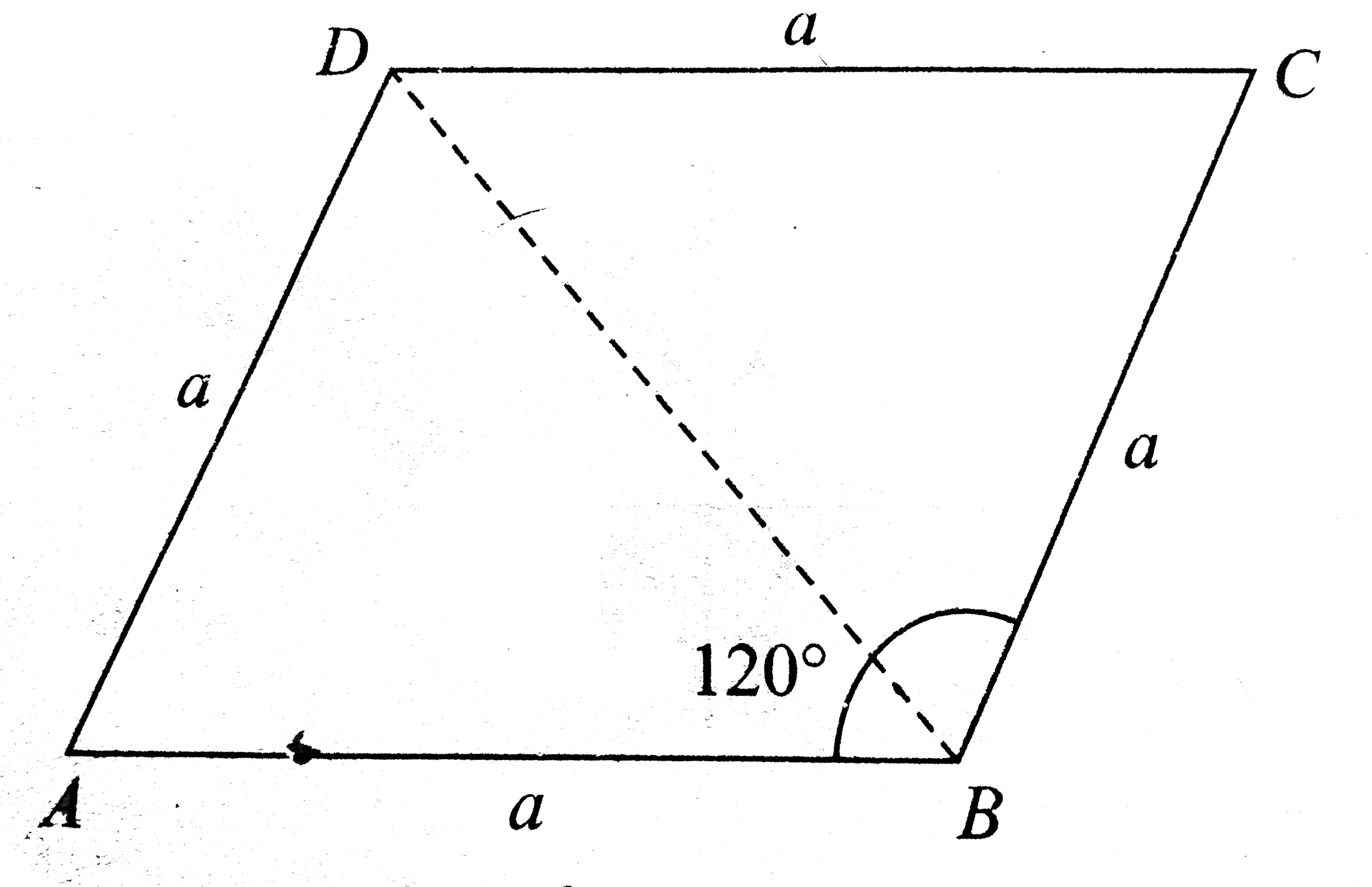 .AE and 0B2 E and - VC√2EandV√2D2 E and V
.AE and 0B2 E and - VC√2EandV√2D2 E and V
Three large conducting parallel sheets are placed at a finite from each other as shown in figure. Find out electric intensity at point A, B, C & D.
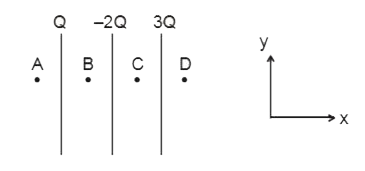 View Solution
View SolutionTwo conducting plates A and B are placed parallel to each other. A is given a charge. Q1 and B a charge Q2. Find the distribution of charges on the four surface.
View SolutionThree point charges -Q, Q and Q are placed on a straight line with distance d between charges as shown. Find the magnitude of the electric field at the point P in the configuration shown which is at a distance a from middle charge Q in the system provided that a>>d. Take 2Qd=p.
 View Solution
View SolutionThree large conducting plates with charges Q,−Q and Q are kept close to each other as shown in the figure. ( where Q=2uc). Now all the three plates A, B, and C are connected by a thin conducting wire. Find the charge ( in C) on left surface of plate A at electristatic equailibrium
View SolutionEach of two large conducting parallel plates has one sided surface area A. If one of the plates is given a charge Q whereas the other is neutral, then the electric field at a point in between the plates is given by
View Solution

